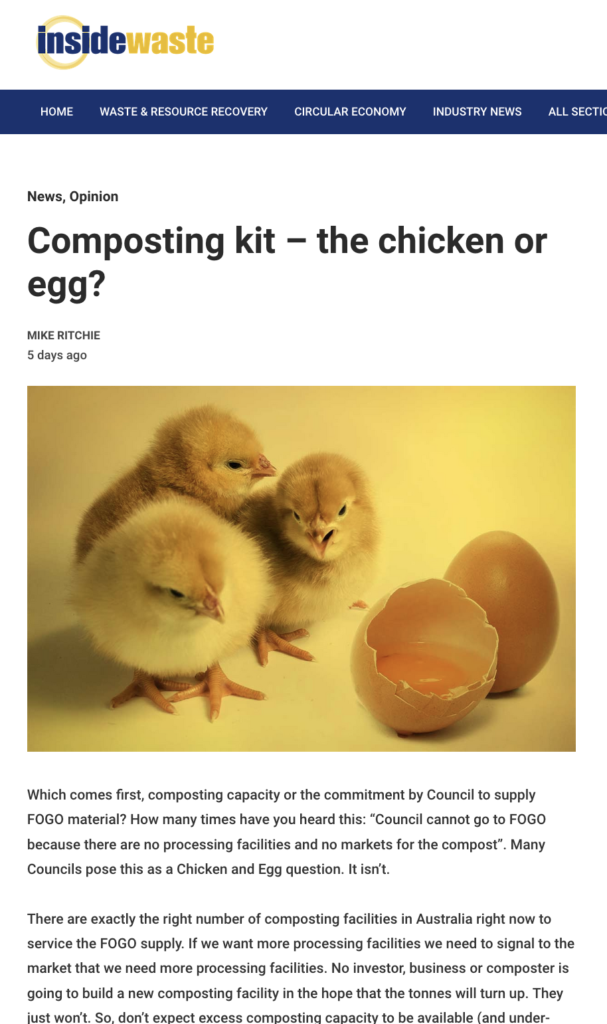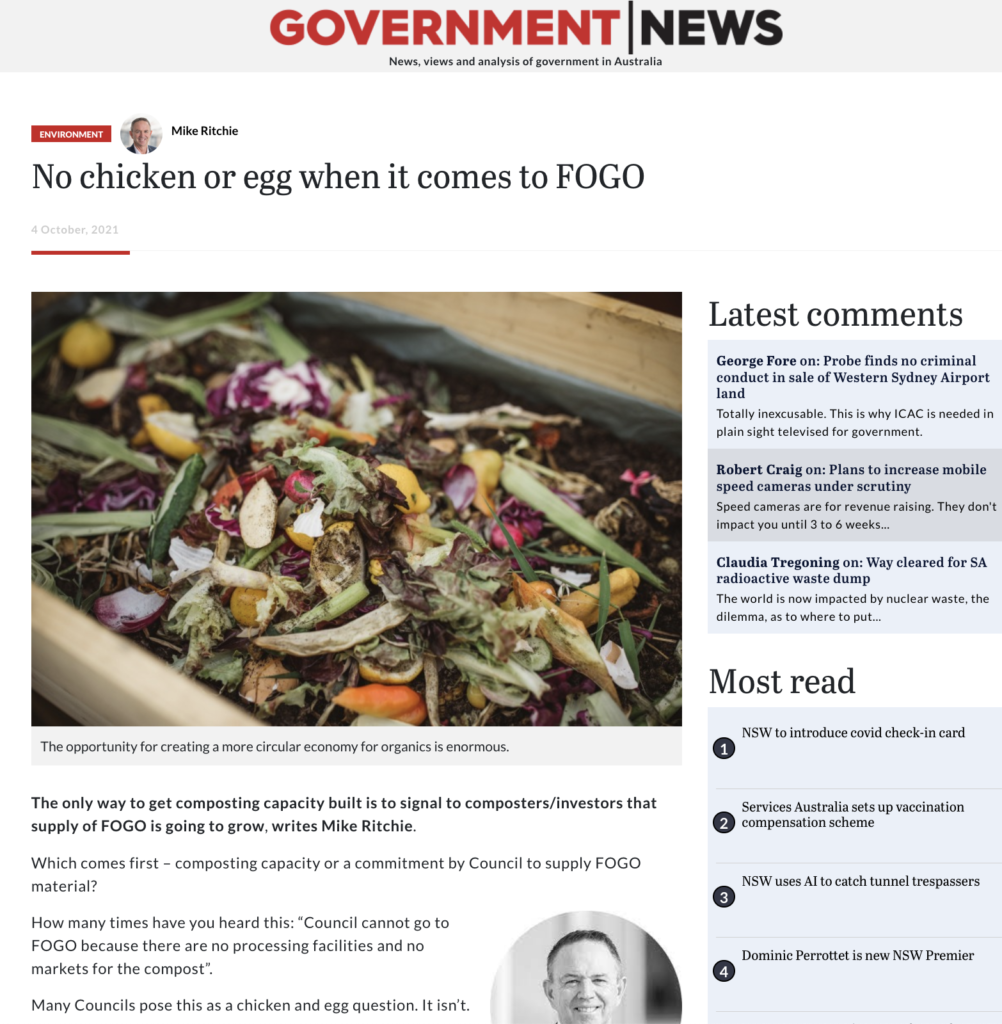Composting kit – Chicken or Egg
By: Mike Ritchie, MRA Consulting Group

How many times have you heard this: “Council cannot go to FOGO because there are no processing facilities and no markets for the compost”.
Many Councils pose this as a Chicken and Egg question. It isn’t.
There are exactly the right number of composting facilities in Australia right now to service the FOGO supply.
If we want more processing facilities we need to signal to the market that we need more processing facilities.
No investor, business or composter is going to build a new composting facility in the hope that the tonnes will turn up. They just won’t.
So don’t expect excess composting capacity to be available (and under-utilised) on the off chance that a Council decides to go FOGO. It isn’t going to happen.
The only way to get composting capacity built is to signal to composters/investors, that supply of FOGO is going to grow.
Tweet
How do you do that?
There are some key steps:
- State governments stating their policy preference clearly. Recent examples are WA Government mandating FOGO in the Perth Peel regions, and Victoria and NSW Governments mandating FOGO across the state.
- By Council preparing a Strategy that commits Council to going to FOGO and preferably to a timeline.
- Going to tender for the supply of FOGO processing services.
- Contracting the supplier (private or Council) to build the facility.
It is only at Step 4 that a composter or investor will have the confidence to part with their money to build the facility.
So there is no CHICKEN or EGG here. It is all on Council.
The only exception to this golden rule is where an existing composting facility has spare capacity. This is usually a function of obtaining an additional licence limit or losing a Council contract to a competitor, or changing systems to be able to process more tonnes.
In these infrequent situations, Council can just directly access existing unused capacity. So just go to tender or sign a commercial supply agreement if you can (within the local government tendering rules).
The best example of this is the SMRC facility in Perth. They ripped out the old Bedminster Drums and converted the facility to a fully operational FOGO facility. They built a better mousetrap with higher capacity on the same site.
Tweet
They are processing 30,000 t/yr now but could easily receive 70,000t/yr. That is an exceptional opportunity for Perth Councils to go to FOGO early and without risk.
A few plants in Melbourne have some spare capacity.
But it is not common.
Most often facilities need to be built or existing facilities need to be expanded.
That takes time. Development consents, licences and construction all take time. This needs to be built into the FOGO timeframe.
We landfill 7 MT of organics right now. The opportunity for creating a more circular economy for organics is enormous.
So the sooner all State Governments state their intentions and Councils develop an organics strategy, the better.Better for getting kit built. Better for clarity, better for investment, better for diversion from landfill, better for farmers and better for climate change abatement.
Mike Ritchie, is the Managing Director at MRA Consulting Group.
This article has been published by the following media outlets:





